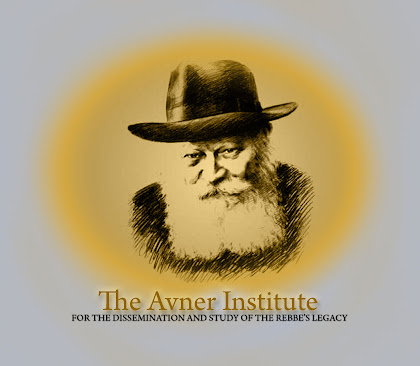
What is a Jewish soul? Can it ever be tainted? The Avner Institute would like to present an insightful conversation that took place when Rabbi Yosef Weinberg, a famed Chabad Chassid who was sent by the Rebbe and the Previous Rebbe on various missions throughout the world, came to Chicago, on orders of the Previous Lubavitcher Rebbe, to pay a visit to a Jew of Chabad lineage.
The Rebbe Archive would like to present a first-time released photo of the Rebbe at a children’s rally on Rosh Chodesh Av, 5742/1982. The children pictured are Chesky Holtzberg, who is standing in front of his brother Yudah. Special thanks to Chesky Holtzberg for sending the picture.
Good Shabbos
Menachem
Rabbi Weinberg relates:
"Before he had left New York, the Rebbe, Rabbi Yosef Y. Schneerson O.B.M., asked Rabbi Levitin to pay a personal visit to a Mr. Listner, a wealthy Jewish businessman in Chicago and a descendant of a prestigious Chassidic family. “ Send him my warm regards and blessings.” The Rebbe said
At the train station in Chicago, Rabbi Yosef Wineberg, then a young man, was waiting to greet Rabbi Levitin. As he stepped off of the train, one of the first questions Rabbi Levitin asked of Rabbi Wineberg was, “ Do you know Charles Listner?”
“Most definitely,” responded Wineberg.
“ Where can I meet up with him – which synagogue does he attend?” asked Rabbi Levitin.
Rabbi Wineberg, never to be at loss for words, responded with a smile, “ I can tell you which Synagogue he should attend, but I don’t think that’s the place you’ll find him. ”
A day or so later, Rabbi Levitin and Mr. Listner met in the businessman’s office. The welcome was very warm, and Listner was especially touched and inspired by the personal regards from the Lubavitcher Rebbe.
The conversation flowed easily, and at the end of the visit, Listner reached for his checkbook and asked, “ To which organization shall I address my contribution?”
“No one,” said Rabbi Levitin. “ Put away the checkbook because I did not come for a donation. Even if you will give me, I will not take.”
“ But why else would an elderly Rabbi come all the way from New York? Just to enjoy a cold drink in my office?” responded the surprised Listner.
“Let me explain it like this.” Rabbi Levitin began.
In the Old Country, there were many small Jewish communities spread all over the countryside. Each community had their own Synagogue, Torah scrolls, and other religious articles.
All Torah scrolls, Mezuzahs, and Tefillin are hand written with ink on parchment by a scribe and periodically checked for flaws – which then need to be fixed by the qualified scribe.
The smaller communities in Europe couldn’t generate enough work to support a permanent scribe, so it became common to see traveling, or wandering scribes who fixed, and rewrote erased letters and patched up these holy works.
“ Every Jew, Mr. Listner,” Rabbi Levitin continued, “ is a living Torah Scroll.”
There are sometimes when some “letters” of our Judaism get a little bit “rubbed off”, and we lose touch with some Mitzvot. I guess you can consider me one of the traveling scribes. My goal is to provide a little spiritual ink, a dab of inspiration and a brush of warmth to our intimate connection with G-d.”
Listner was deeply moved by this parable and Rabbi Levitin returned to New York. There he shared what he had said with the Rebbe, expecting positive acknowledgment for his innovative example. But to his surprise the Rebbe was silent.
Worried, he asked, “ Did I say something incorrect? Doesn’t the Talmud compare a Jew to a Sefer Torah?”
“Yeh,” responded the Rebbe warmly in Yiddish. “ But there is one big difference.”
The Torah is written with ink on parchment, two separate entities combined into one. The ink could be erased or rubbed off. But the Jew? The Jew is like a Torah Scroll but with engraved letters. The Torah is engraved in his heart, and on his soul. When letters are engraved, as were the Ten Commandments on the two Tablets, it is impossible for them to be rubbed off or separated in any way.
“At times a little dust can accumulate and cover the letters. ” Here the Rebbe picked up on the parable and concluded, “ Then, the job of the “wandering scribe” is to help brush off some dust. Instantly the letters will shine.”
As I sat at the conference and listened to this account, I found a new meaning for the term “engraving.”
Each and every one of us is a “scribe” with the ability to refresh dusty souls, but perhaps before we search for someone else’s dust, let’s begin with our own.


No comments:
Post a Comment